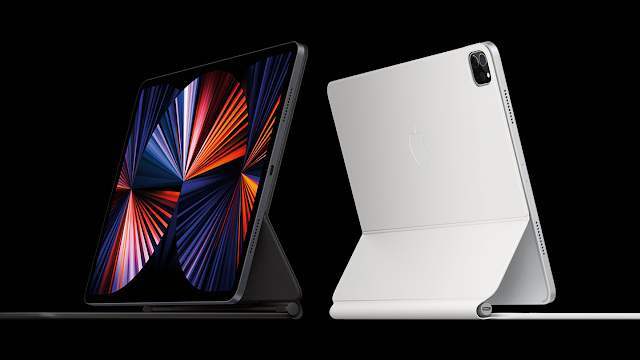Apple iPad Pro 12.9in (Apple M1, 2021) review: Falls just short of greatness - Click to buy
Over the past few years, the iPad Pro has slowly matured into quite the powerhouse, but it’s taken a giant leap forward in 2021. Adopting the much-lauded Apple M1 processor – the same chip found inside this year’s 24in iMac, Mac mini, MacBook Pro and MacBook Air – it has finally drawn level with its more “serious” counterparts when it comes to raw power.
The M1 chip isn’t the only big upgrade for the 2021 iPad Pro, either, despite the fact that it looks pretty much identical to the previous model. Next on the list of upgrades is the new “Liquid Retina XDR” display, which employs Mini-LED technology to boost its HDR capabilities, improving the visuals without the cost to peak brightness and battery life that OLED often brings with it. It’s also available in the same two sizes as before – 12.9in and 11in – although take note: the smaller iPad Pro does not come with the revolutionary Mini-LED display.
Coupled with the advances that Apple has made to iPadOS, the latest iPad Pro more closely resembles a full-blown laptop alternative than it ever has before.
Apple iPad Pro 12.9in (Apple M1, 2021) review: Design - Click to buy
Despite all of the upgrades, the physical design of the new iPad is no different from last year’s model. It’s still available in Space Grey or Silver, measures 5.9mm thick and weighs 682g – or 1.4kg with the Magic Keyboard attached to it. For reference, the smaller 11in model weighs 468g for the tablet and 1.1kg with the Magic Keyboard.
You have a pair of cameras on the rear in the corner, in a square, raised housing like the one on Apple’s iPhone 12 range of smartphones. Beside it is the tablet’s LiDAR scanner, which is used to measure objects with the iOS Measure app and by some apps that use AR (augmented reality).
Also on the rear are three metal contacts for all-but-essential keyboard attachment, while around the edges you’ll find a single Thunderbolt 3 port, the volume and power buttons (in the upper left corner if you have the tablet in landscape orientation) plus four speaker grilles for the iPad Pro’s quad speaker array. The audio output of the iPad Pro’s speakers, incidentally, remains among the best we’ve heard on any device.
Apple iPad Pro 12.9in (Apple M1, 2021) review: Display -Click to buy
There are no such caveats with the new “Liquid Retina XDR display”, which is quite frankly bonkers. It measures 12.9in across the diagonal and has a resolution of 2,732 x 2,048, the same as last year, but this time it uses Mini-LED technology. It’s similar to the IPS LED screen in last year’s iPad Pro but with many more of those LEDs in the backlight. The result is blindingly bright highlights and inky dark black level response.
So why has Apple chosen not to go OLED? We can only assume that battery life and brightness each play a significant part. Most of the OLED displays we’ve seen on laptops have negatively impacted battery life, with the Samsung Galaxy Book Pro’s 1080p OLED screen proving the only exception.
Peak brightness also rarely reaches the same levels as it does with backlit LCD screens. You can compensate for that indoors by drawing the curtains but you can’t do that when you’re out and about, and that generally makes OLED displays an inferior choice in bright environments.
The iPad Pro 12.9in’s Mini-LED display strikes the perfect compromise. The contrast ratio isn’t perfect as it is on OLED screens – we were able to observe the black level rising up to 0.17cd/m2 in some circumstances – but combined with a peak brightness of up to 1,600cd/m2 with Dolby Vision HDR material and 1,000cd/m2 at full-screen (that’s genuinely, blindingly bright, by the way) it delivers a contrast ratio that’s very nearly as good. Click to buy
